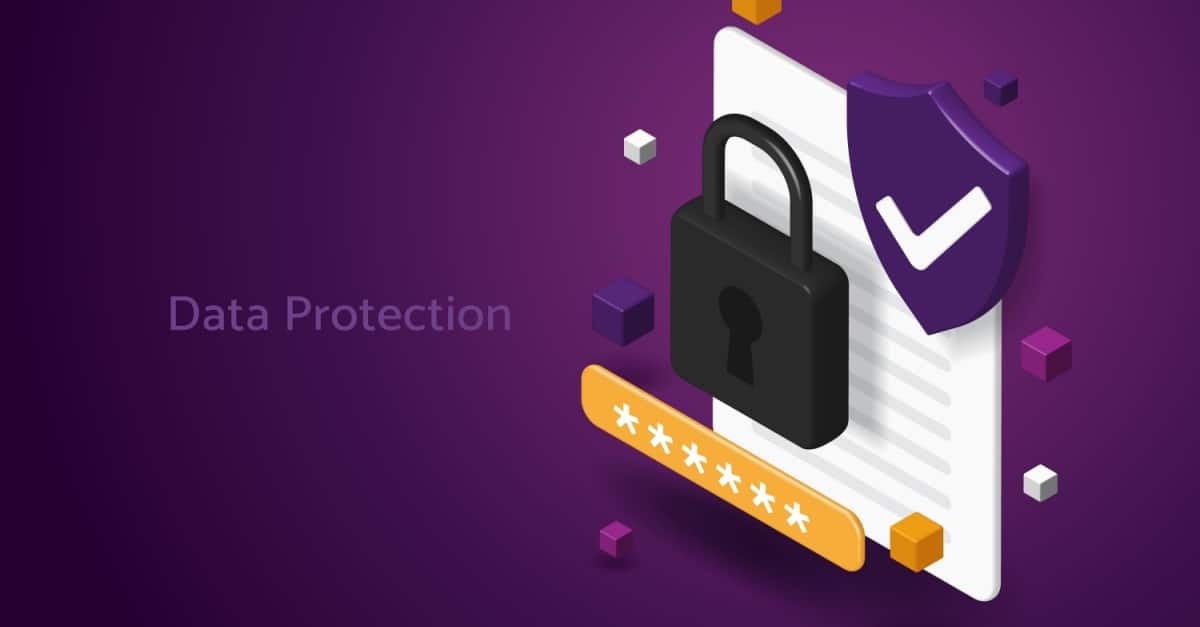What Is Data Loss Prevention Policy?
A Data Loss Prevention (DLP) policy is a set of guidelines and procedures designed to prevent the unauthorized access, sharing, or exposure of sensitive data within an organization. These policies are crucial for maintaining data confidentiality, integrity, and availability. DLP policies help organizations comply with regulations, protect intellectual property, and improve visibility into their data.
These policies work with specialized DLP technologies, which monitor data in use, in motion, and at rest. Implementation usually involves automated alerts, policy enforcement actions, and detailed reporting on data-related activities. The aim is to reduce the risk of accidental or deliberate data leaks, ensuring compliance with regulatory mandates. DLP policies form a foundational component of an organization’s overall information security framework.
Key components of a DLP policy include:
- Data identification: Defining the types of sensitive data that need protection.
- Access control: Determining which users and systems can access sensitive data.
- Data handling procedures: Establishing rules for how data is stored, transmitted, and shared.
- Security technologies: Specifying the technologies used to protect data, such as encryption and access controls.
- Compliance measures: Addressing relevant regulations and standards.
- Incident response plan: Outlining steps to take in the event of a data breach or security incident.
Examples of DLP policy implementation:
- Email: Preventing sensitive information from being sent to unauthorized recipients or external domains.
- Cloud storage: Restricting access to sensitive data stored in cloud services.
- Endpoint devices: Protecting data on laptops, desktops, and mobile devices.
- Collaboration tools: Ensuring sensitive information is not shared inappropriately in platforms like Microsoft Teams.
Benefits of DLP include:
- Reduced risk of data breaches: DLP policies help prevent unauthorized access, accidental leaks, and intentional data exfiltration.
- Compliance with regulations: DLP helps organizations meet data privacy requirements and industry standards.
- Protection of intellectual property: DLP policies protect valuable company information from being stolen or misused.
- Improved data visibility: DLP provides insights into how sensitive data is being used within the organization.
In this article:
- Why Your Organization Needs a DLP Policy
- 6 Essentials for Every Data Loss Prevention Policy
- Use CasA Process for Defining Your Own DLP Policies
Why Your Organization Needs a DLP Policy
Implementing a DLP policy provides several critical benefits for organizations:
- Prevent data breaches and financial loss: Data breaches are costly: IBM estimates the average breach exceeds $4 million. A DLP policy lowers this risk by monitoring and blocking the transmission of sensitive data—reducing financial loss and avoiding expensive fines.
- Maintain regulatory compliance: Regulations such as GDPR, HIPAA, PCI-DSS, CCPA, and others mandate rigorous control over sensitive data. A DLP policy ensures structured data handling, documentation, and reporting—essential for legal compliance.
- Safeguard intellectual property and customer trust: DLP protects trade secrets, research, and customer PII from internal leaks, theft, or accidental exposure. By controlling data flow via access rules and encryption, you preserve both trade advantages and reputation.
- Detect and manage insider threats: Whether unintentional or malicious, insider incidents cause a sizable portion of data loss. DLP systems flag unusual behavior, enforce employee data-use policies, and curb leaks from negligence or intent.
- Gain visibility and control over data lifecycle: DLP mandates data discovery, classification, and mapping—across endpoints, networks, cloud, and storage—offering insights into where sensitive information resides and travels.
- Strengthen security culture and operational efficiency: A formal DLP policy educates staff on secure data handling, simplifies workflows, reduces accidental exposures, and supports consistent handling of sensitive data.
6 Essentials for Every Data Loss Prevention Policy
1. Data Identification and Classification
Define what types of sensitive data your organization needs to protect. This includes personally identifiable information (PII), financial records, intellectual property, and any other business-critical information. Use automated tools where possible to locate and classify data across your network, endpoints, and cloud services.
2. Access Control Policies
Establish clear rules on who can access sensitive data and under what conditions. Implement role-based access controls (RBAC) to ensure that only authorized users have the necessary permissions. Continuously review and update access rights as user roles and responsibilities change.
3. Data Handling Procedures
Develop detailed procedures for how sensitive data can be stored, transmitted, shared, and processed. This should cover encryption requirements, file transfer protocols, and data storage locations. Specify prohibited actions, such as uploading sensitive data to unsanctioned cloud services or sending it via unsecured email.
4. Security Technologies and Enforcement Mechanisms
Leverage technical controls like encryption, endpoint monitoring, content inspection, and real-time alerting to enforce your DLP policies. These technologies should integrate with key infrastructure components such as email systems, cloud storage platforms, and endpoint devices to provide comprehensive coverage.
5. Compliance and Regulatory Alignment
Ensure your DLP policy addresses all relevant industry regulations and data privacy laws, such as GDPR, HIPAA, PCI-DSS, or CCPA. Document how your controls map to regulatory requirements and include processes for audit readiness and regulatory reporting.
6. Incident Response and Remediation Plan
Include a clear and actionable incident response plan within your DLP policy. Outline the steps to take when a data loss event or policy violation occurs, covering detection, investigation, containment, notification, and recovery. Define roles and responsibilities for all stakeholders involved in the response process.
Use CasA Process for Defining Your Own DLP Policies
1. Identify Sensitive Data, Prioritizing by Order of Importance
Begin by cataloging the types of sensitive data in your organization—intellectual property, customer financial details, or employee records. Prioritize these data types based on factors like regulatory requirements, business impact if lost, and how widely the data is used. This prioritization ensures resources are allocated efficiently, focusing first on the data that would cause the most damage if leaked or misused.
Next, work with stakeholders across departments to refine this list and identify any evolving data types. Regular review sessions can uncover new critical data as business needs change or as regulatory standards evolve. Documenting the rationale behind your prioritization helps justify DLP investments and guides ongoing policy adjustments.
2. Locate Where Data is Stored
The next step is mapping where prioritized data is stored—on-premises servers, cloud services, endpoints, or third-party platforms. Data mapping is essential for comprehensive DLP coverage. Without this inventory, organizations risk leaving critical information unmonitored and vulnerable. Use automated tools where possible to scan repositories and flag all instances of sensitive data.
Include non-traditional locations, such as team chat histories, archived emails, or mobile devices used for remote work. Understanding data sprawl allows organizations to set appropriate DLP controls at each location. Continuously update your storage inventory as new services are adopted, ensuring no sensitive data slips through protection gaps.
3. Classify and Tag Data Sources by Data Type
Effective DLP policy enforcement requires clear data classification and tagging. Implement labeling mechanisms so that each piece of data is marked according to its sensitivity, regulatory needs, and business value. This process enables DLP systems to enforce varying controls based on data type, ensuring stricter measures for highly sensitive information.
Automate data classification wherever feasible, leveraging machine learning or pattern matching to reduce manual effort and human error. Ensure tags are applied consistently across all platforms, from file systems to cloud storage. Accurate tagging drastically increases policy precision, reducing both false positives and cases of unprotected data slipping by.
4. Determine User Roles and Levels of Data Access
Assign access rights and DLP policy enforcement based on user roles. Limit sensitive data exposure to only those who need it to perform their job duties. Implement role-based access control (RBAC) to granularly define permissions—reducing the potential impact of compromised accounts and unintentional data exposure by regular users.
Continuously review access logs and user roles, especially as employees change positions or leave the company. Integrate user role management with other HR processes to ensure swift policy updates. User awareness training on data access hygiene complements technical controls.
5. Predefine Remedial Actions When Responding to a Security Event
Establish clear, predefined response protocols for DLP alerts and incidents. Specify steps for triage, escalation, and resolution, including who is responsible at each stage. Effective incident response ensures that when a security event occurs—whether accidental or malicious—your team acts quickly, mitigating damage and fulfilling regulatory reporting requirements.
Documented processes should distinguish between minor policy violations and major breaches, enabling appropriate, proportional responses. Where possible, automate routine actions such as quarantining files or temporarily blocking user accounts. Finally, conduct regular incident simulations to keep response teams prepared and refine response playbooks based on lessons from past incidents.
Supporting DLP with Robust Browser Security
As the browser has become the primary productivity tool in today’s enterprise, it also represents one of the most common vectors for data loss and exfiltration. Traditional DLP solutions struggle to effectively monitor and control sensitive data within browser-based apps and workflows. Seraphic Security extends powerful, policy-driven DLP capabilities seamlessly to any browser, without requiring additional infrastructure or browser replacements. Seraphic prevents data loss by enforcing granular, in-browser controls over uploads, downloads, copy-paste, printing, and clipboard actions—even within SaaS, GenAI, and collaboration apps—ensuring sensitive data stays protected across corporate-managed as well as personal and BYO devices.






